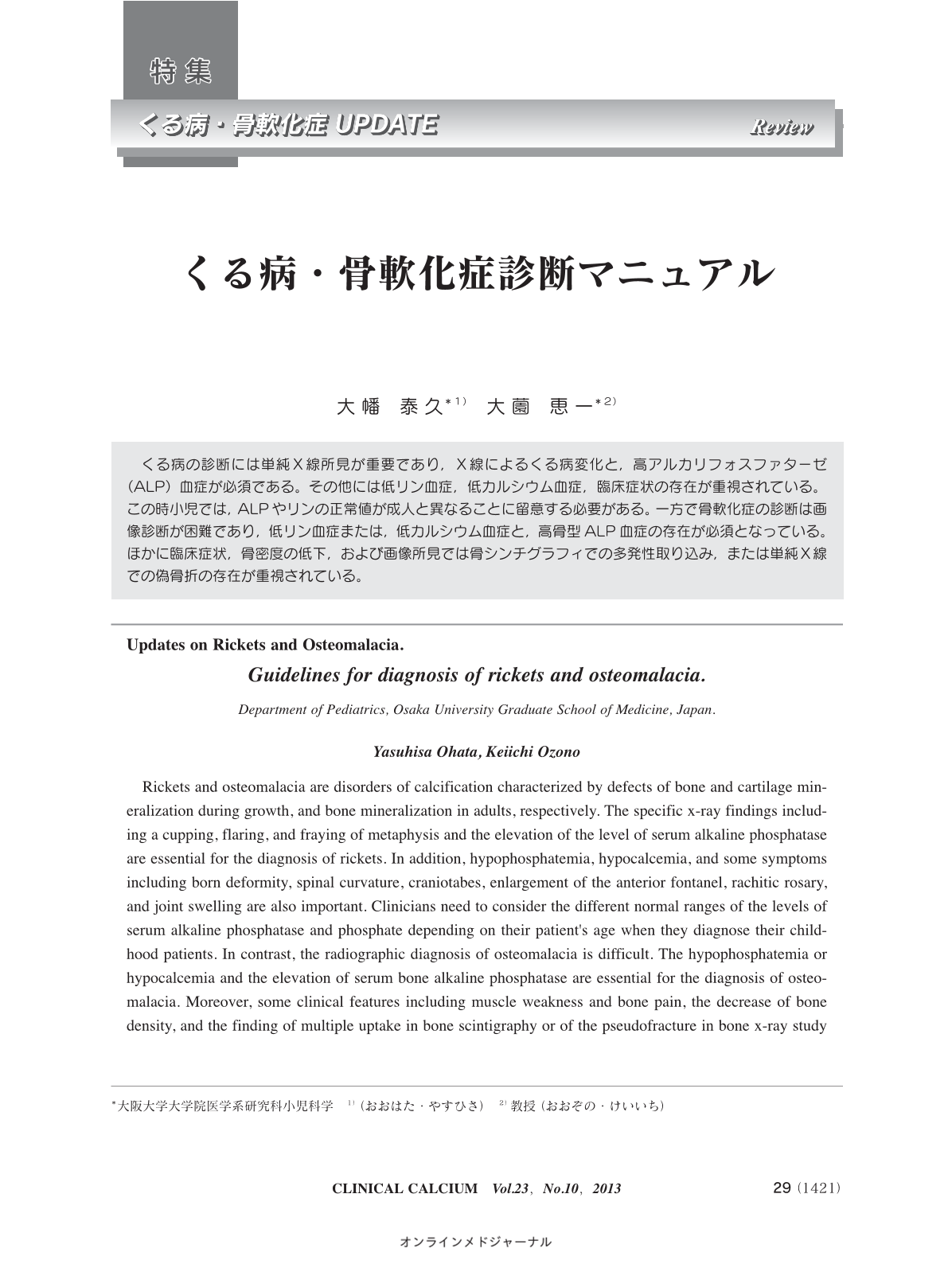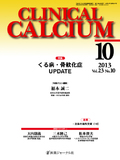Japanese
English
- 有料閲覧
- Abstract 文献概要
- 1ページ目 Look Inside
- 参考文献 Reference
くる病の診断には単純X線所見が重要であり,X線によるくる病変化と,高アルカリフォスファターゼ(ALP)血症が必須である。その他には低リン血症,低カルシウム血症,臨床症状の存在が重視されている。この時小児では,ALPやリンの正常値が成人と異なることに留意する必要がある。一方で骨軟化症の診断は画像診断が困難であり,低リン血症または,低カルシウム血症と,高骨型ALP血症の存在が必須となっている。ほかに臨床症状,骨密度の低下,および画像所見では骨シンチグラフィでの多発性取り込み,または単純X線での偽骨折の存在が重視されている。
Rickets and osteomalacia are disorders of calcification characterized by defects of bone and cartilage mineralization during growth, and bone mineralization in adults, respectively. The specific x-ray findings including a cupping, flaring, and fraying of metaphysis and the elevation of the level of serum alkaline phosphatase are essential for the diagnosis of rickets. In addition, hypophosphatemia, hypocalcemia, and some symptoms including born deformity, spinal curvature, craniotabes, enlargement of the anterior fontanel, rachitic rosary, and joint swelling are also important. Clinicians need to consider the different normal ranges of the levels of serum alkaline phosphatase and phosphate depending on their patient's age when they diagnose their childhood patients. In contrast, the radiographic diagnosis of osteomalacia is difficult. The hypophosphatemia or hypocalcemia and the elevation of serum bone alkaline phosphatase are essential for the diagnosis of osteomalacia. Moreover, some clinical features including muscle weakness and bone pain, the decrease of bone density, and the finding of multiple uptake in bone scintigraphy or of the pseudofracture in bone x-ray study are also important. It is very useful for the differential diagnosis to measure the serum levels of 25-hydroxy vitamin D and fibroblast growth factor 23.



